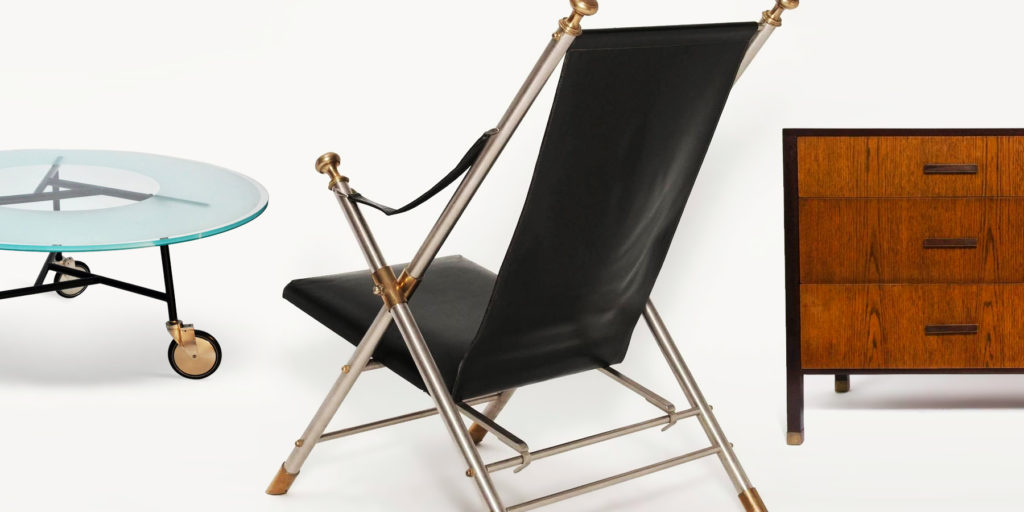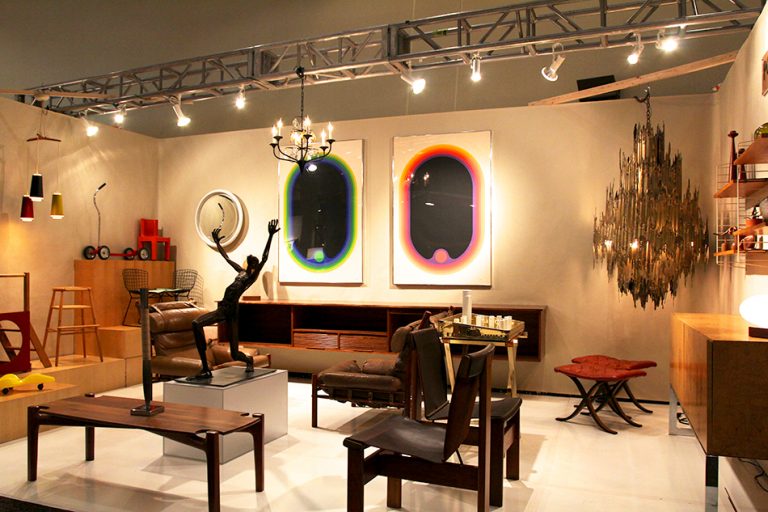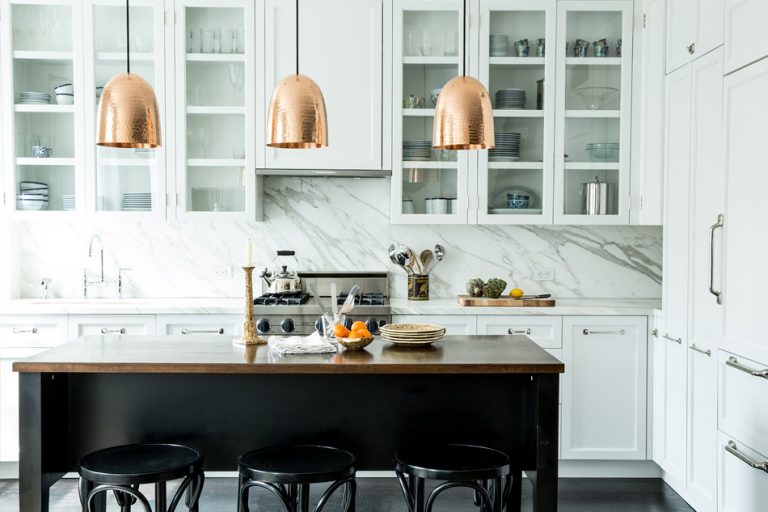
March 25, 2009Jeffrey Schuerholz, owner of Fat Chance in Los Angeles, with a 1940s patent leather and Lucite chair by Grosfeld House and a pair of figurative paintings Hollywood director and artist Jean Negulesco.
The vibe here is everything from Daft Punk to Puccini,” says Jeffrey Schuerholz of his Los Angeles store, Fat Chance. To have endured so stylishly in a town where today’s stars are tomorrow’s old news is quite an accomplishment for a guy who grew up in southern Ohio at the very end of suburban sprawl surrounded by cornfields and woods.
“I knew at an early age that I wanted to do something that connected me to the rest of the world,” Schuerholz says. His passion for nature and art inspired him to study painting and sculpture and to make jewelry with local modern artists, which culminated in his own show by the time he was 17.
After a year at Ohio University, he relocated to Berkeley, California, and found himself at the epicenter of the 1960s counterculture. He graduated from the California College of Arts and Crafts with a BFA degree. And while he continued his painting and work as a sculptor, “much of my time there was spent working with the anti-war movement,” he remembers. Determined to make it as an artist, Schuerholz started buying and selling interesting items in order to support himself.
A move to Los Angeles soon ensued, because, Schuerholz explains, “L.A. is a world capital of modernist architecture and design, and a place of new ideas. This is where Richard Neutra, Ray and Charles Eames, Rudolph Schindler, Frank Lloyd Wright and other modernists decided to work and live. Not to mention the topless bathing suit was invented here.” In his new home, Schuerholz spent more time pursuing beautiful furniture and lighting and less on his art.
Soon, he had rented his first store on Melrose Avenue in what was then considered an “across the tracks” location. “I helped pioneer the part of Melrose that would later become one of the most famous streets in the world,” he says. “Before the store was officially open, the editor of an important shelter magazine stood in my doorway. Without stepping a foot inside, she said, ‘Fat chance in this location.’ The name stuck.”

Left: In Schuerholz’s second store are Lucite and upholstered chairs by Pace and fossilized coral tusks by Maitland-Smith. Right: This tableau features a Philip and Kelvin LaVerne coffee table, 1940s smoked-glass mirror and wood screen, 1960s gilt-bronze tree by Jacques Duval Brasseur and painting by Anna Katharine Skeele, ca. 1940.

A welded-bronze sculpture by Abbott Pattison stands before a Mathieu Matégot tapestry.
At first, his inventory contained lighting and decorative pieces that were American Art Deco or mid-century modern, but gradually he began to sell less from the 1930s and more important designs of the 1950s and ’60s. “Selling a Noguchi table in 1978 was pushing it,” says Schuerholz. “I had about five customers who would be interested. If they didn’t buy it, no one did.” But he was still enthusiastic about exploring the boundaries beyond what other stores were offering.
After 12 years, Schuerholz needed more space (“besides,” he adds, “the scene on Melrose had changed”), so he moved into a former 1920s mechanics’ shop on La Brea Boulevard. With soaring 40-foot ceilings, the space felt very much like a gallery, which suited Schuerholz just fine, since most of his neighbors sold art. “I started including 1970s pieces around 1990. Soon, the opulent designs of the 1980s followed. Whatever was next was always the most interesting to me.”
A few years ago, he added a second location 20 feet away from the main shop. “I didn’t even name it. I keep the other store locked and just walk clients over. Many are surprised to find out that there is an entire other Fat Chance.” Inside, the pieces tend to be exaggerated in size and style.
One particular favorite designer is Karl Springer, on whom Schuerholz plans an exhibition of works this fall. “I covet his furniture. I recently bought a six-panel coromandel screen of a Vermicelli design in red and gold rub through the lacquer. It is stunning.”

Left: A T.H. Robsjohn-Gibbings coffee table from the 1940s and an Edmund J. Spence dresser are accompanied by a yellow 1959 abstraction by Aubrey Penny and a 1958 cityscape painting by Leonardo Nierman. Right: A pair of white Pedro Friedeberg hand chairs juxtapose the vivid colors in the Matzot tapestry.

Here, the backgammon table, six-panel coromandel screen and mirror are by Karl Springer, and the red glass obelisk is by Venini.
Also up for grabs is a recently purchased collection of drawings and paintings by Hollywood director Jean Negulesco (famous for How to Marry a Millionaire) and a pair of Pedro Friedeberg’s carved-wood hand chairs in the original white. “They were purchased from the artist in the 1960s for an all-white condominium in Acapulco,” says Schuerholz.
Such rare finds demonstrate Schuerholz’s ability to access some of the most glamorous homes in Hollywood — and to buy from people all over the United States. “My clients are so wonderful and loyal. They are established designers and architects, and young people starting out. They also include well-known people from David Bowie to Jocelyn Wildenstein and everyone in between,” the dealer says.
Not only does Schuerholz help celebrities with their homes but he plays a pivotal role when it comes to dressing films. For instance, when the movie Dreamgirls needed set decorations, Fat Chance provided much of the furniture, lighting and accessories to amp up the authenticity — as well as the sex appeal — of the vintage sets.
“My dream as a kid was always to do something that would involve people from all over the globe,” Schuerholz says. “Well, in one week I shipped a coffee table to Hong Kong, a pair of lamps to Kuwait and something to Atlanta. This week, a pair of floor lamps went out the door on their way to Saudi Arabia.” Dream accomplished — with very little left to chance.


